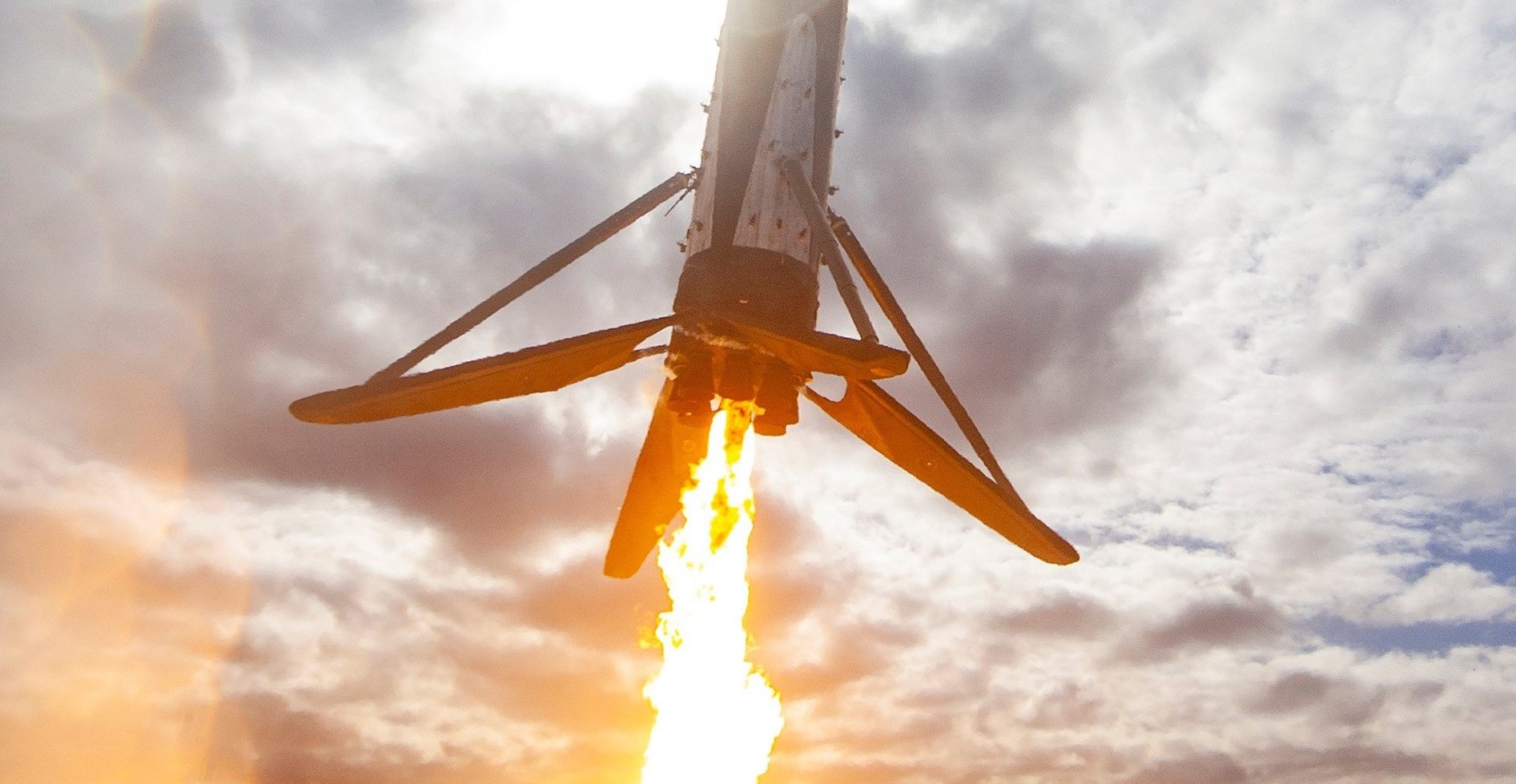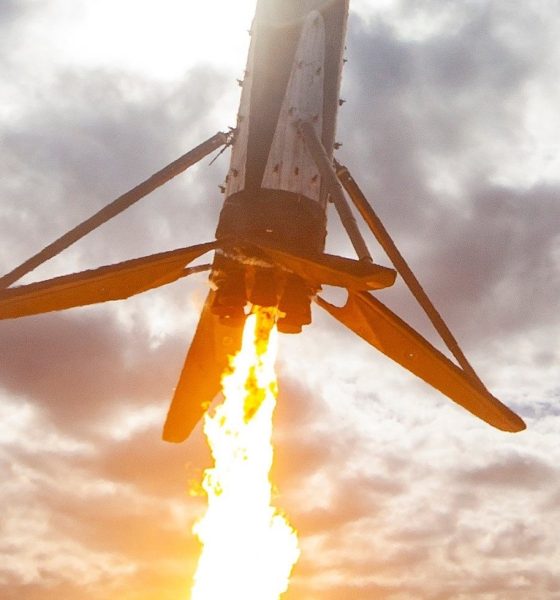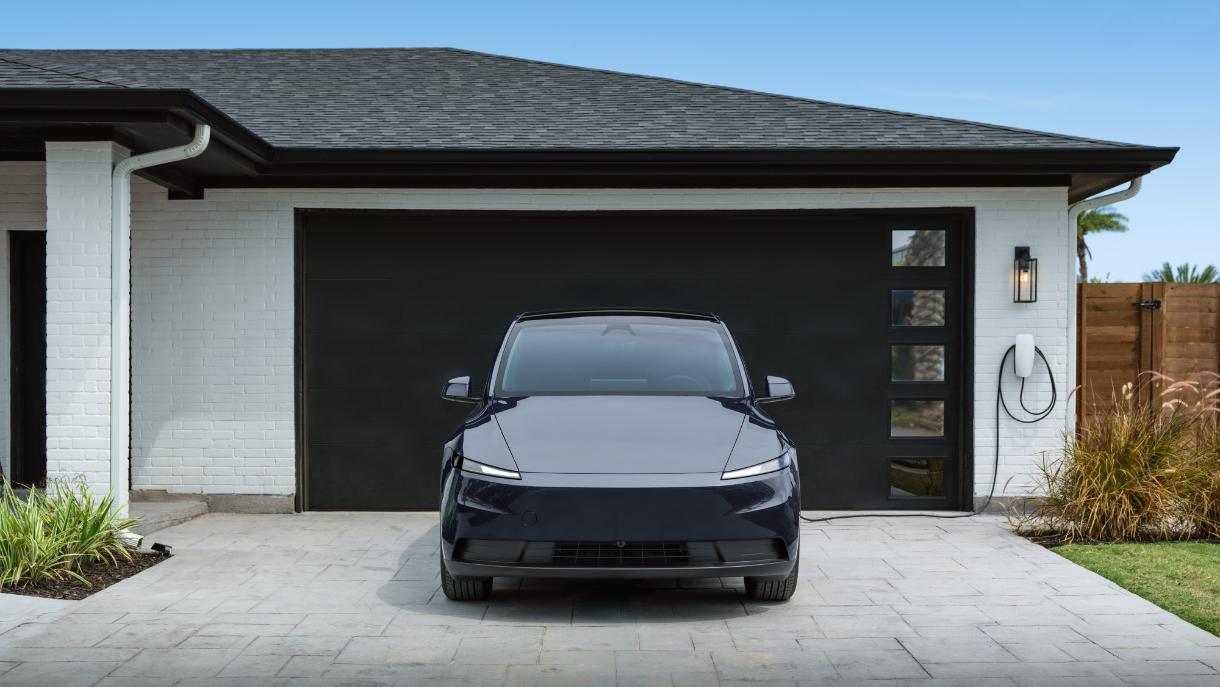

News
SpaceX Falcon 9 booster fires up ahead of NASA launch and surprise drone ship landing
SpaceX has successfully fired up a new rocket ahead of what is now believed to be a surprise Falcon 9 booster drone ship landing, to follow shortly after the company’s upcoming CRS-19 Cargo Dragon resupply mission for NASA.
Around 5:30 pm EST (22:30 UTC) on November 26th, a Falcon 9 rocket – featuring a rare unflown booster – successfully performed a wet dress rehearsal (WDR) and ignited all nine of its first age Merlin 1D engines, verifying the rocket’s health and perfectly simulating a launch right up to the point of liftoff. With that routine static fire complete, SpaceX now has a luxurious seven days to bring the rocket horizontal, roll it back into LC-40’s integration and processing hangar, install Cargo Dragon atop the second stage, and roll the fully-integrated rocket back out to the launch mount.
According to NASASpaceflight.com reporter Michael Baylor, SpaceX decided to swap boosters, moving Falcon 9 B1056.3 to a commercial satellite mission and assigning B1059.1 to Cargo Dragon’s NASA CRS-19 resupply mission. Prior to visual confirmation of this shift, NASA and SpaceX had indicated interest in flying Block 5 booster B1056 for a third time after it successfully completed its second launch and landing for NASA on July 25th, 2019. That would have been the first time NASA certified a twice-flown SpaceX booster to launch a NASA mission, a critical step along the path to making booster reuse routine – even for SpaceX’s highest-profile customers.
Instead, B1056.3 is now scheduled to launch the Kacific-1/JCSAT-18 commsat no earlier than December 15th, while CRS-19 is scheduled to lift off at 12:51 pm EST (17:51 UTC) on December 4th. As with most other missions designed to quickly rendezvous with the International Space Station (ISS), CRS-19’s launch window is effectively instantaneous, meaning that any issue during the countdown or day-of preparations will force a ~24-hour recycle.
Aside from it being unclear why exactly NASA, SpaceX, or both parties decided against launching B1056 for the third time on CRS-19, the mission features another minor mystery. Instead of using the performance left over from such a light launch to low Earth orbit (LEO) to return the booster to launch site (RTLS) and land at SpaceX’s LZ-1/2 landing pads, it appears that Falcon 9 B1059 will attempt to land aboard drone ship Of Course I Still Love You (OCISLY).
Since April 2016, SpaceX has only once intentionally recovered Falcon 9 by sea after a Cargo Dragon launch. That particularly recovery occurred during CRS-17 in May 2019, just a few weeks after Crew Dragon capsule DM-1 catastrophically exploded just prior to an attempted static fire test located adjacent to LZ-1/2. That explosion littered the area with evidence, precluding Falcon 9’s planned LZ-1 recovery in the same way that a police helicopter would likely try to avoid landing directly on top of an active crime scene. In that case, extraordinary attenuating circumstances were required before SpaceX redirected a CRS launch’s booster recovery to a drone ship.
Seemingly lacking similarly extraordinary circumstances, it remains to be seen whether SpaceX or NASA will offer an explanation for the unexpected change in plans. On the plus side, an unexpected Falcon 9 drone ship landing also means an unexpected Port Canaveral return, which should offer increasingly rare views of a once-flown Falcon 9 booster.
Routinely reusable spacecraft
As expected, CRS-19 will become the second orbital launch of a twice-flown Cargo Dragon capsule, flexing SpaceX’s reusability muscles in the much less forgiving realm of orbital spacecraft. On July 25th, CRS-18 became the first such mission to reuse a twice-flown spacecraft, leaving SpaceX with several additional twice-flown Cargo Dragon capsules as the only plausible options for its remaining three CRS1 missions.
SpaceX says that CRS-19’s Cargo Dragon capsule previously flew CRS-4 (Sept 2014) and CRS-11 (June 2017), identifying it as capsule C106. As it turns out, C106 supported SpaceX’s first Cargo Dragon capsule reuse, making it a fairly historic vehicle – the first commercial orbital spacecraft reused in history. Beginning with CRS-3, Dragon 1 vehicles were designed to support up to three orbital missions each, leaving SpaceX with four possible capsules (C110-C113) capable of supporting CRS-20, Dragon 1’s last planned launch.
Check out Teslarati’s Marketplace! We offer Tesla accessories, including for the Tesla Cybertruck and Tesla Model 3.

News
Tesla Model Y Standard stuns in new range test, besting its Premium siblings
Tesla’s newer vehicles have continued to meet or exceed their EPA estimates. This is a drastic change, as every 2018-2023 model year Tesla that Edmunds assessed did not meet its range estimates.

The Tesla Model Y Standard stunned in a new range test performed by automotive media outlet Edmunds, besting all of its Premium siblings that are more expensive and more luxurious in terms of features.
Testing showed the Model Y Standard exceeded its EPA-estimated range rating of 321 miles, as Edmunds said it is the “longest-range Model Y that we’ve ever put on our loop.” In the past, some vehicles have come up short in comparison with EPA ranges; for example, the Model Y’s previous generation vehicle had an EPA-estimated range of 330 miles, but only drove 310.
Additionally, the Launch Series Model Y, the first configuration to be built in the “Juniper” program, landed perfectly on the EPA’s range estimates at 327 miles.
It was also more efficient than Premium offerings, as it utilized just 22.8 kWh to go 100 miles. The Launch Series used 26.8 kWh to travel the same distance.
It is tested using Edmunds’ traditional EV range testing procedure, which follows a strict route of 60 percent city and 40 percent highway driving. The average speed throughout the trip is 40 MPH, and the car is required to stay within 5 MPH of all posted speed limits.
Each car is also put in its most efficient drive setting, and the climate is kept on auto at 72 degrees.
“All of this most accurately represents the real-world driving that owners do day to day,” the publication says.
With this procedure, testing is as consistent as it can get. Of course, there are other factors, like temperature and traffic density. However, one thing is important to note: Tesla’s newer vehicles have continued to meet or exceed their EPA estimates. This is a drastic change, as every 2018-2023 model year Tesla that Edmunds assessed did not meet its range estimates.
Tesla Model Y Standard vs. Tesla Model Y Premium
Tesla’s two Model Y levels both offer a great option for whichever fits your budget. However, when you sit in both cars, you will notice distinct differences between them.
The Premium definitely has a more luxurious feel, while the Standard is stripped of many of the more premium features, like Vegan Leather Interior, acoustic-lined glass, and a better sound system.
You can read our full review of the Model Y Standard below:
Tesla Model Y Standard Full Review: Is it worth the lower price?
News
Xpeng CEO: Tesla FSD 14.2 has developed “near-Level 4” performance
While acknowledging that imperfections remain, the Xpeng CEO said FSD’s current iteration significantly surpasses last year’s capabilities.

Xpeng CEO He Xiaopeng has offered fresh praise for Tesla’s Full Self-Driving (FSD) system after revisiting Silicon Valley more than a year after his first hands-on experience.
Following extended test drives of Tesla vehicles running the latest FSD software, He stated that the system has made major strides, reinforcing his view that Tesla’s approach to autonomy is indeed the proper path towards autonomy.
Tesla FSD closing in on Level 4 driving
During his visit, He test-drove a Tesla equipped with FSD V14.2. He also rode in a Tesla Robotaxi. Over roughly five hours of driving across Silicon Valley and San Francisco, He said both vehicles delivered consistent and reassuring performance, a notable improvement from his experience a year earlier.
According to He, Tesla’s FSD has evolved from a smooth Level 2 advanced driver assistance system into what he described as a “near-Level 4” experience in terms of capabilities. While acknowledging that imperfections remain, the Xpeng CEO said FSD’s current iteration significantly surpasses last year’s capabilities. He also reiterated his belief that Tesla’s strategy of using the same autonomous software and hardware architecture across private vehicles and robotaxis is the right long-term approach, allowing users to bypass intermediate autonomy stages and move closer to Level 4 functionality.
He previously tested Tesla’s FSD V12.3.6 and Waymo vehicles in California in mid-2024, noting at the time that Waymo performed better in dense urban environments like San Francisco, while Tesla excelled in Silicon Valley and on highways.
Xpeng’s ambitious autonomy roadmap and internal challenge
The Silicon Valley visit also served as a benchmark for Xpeng’s own autonomy ambitions. He stated that Xpeng is looking to improve its VLA autonomous driving system to match the performance of Tesla’s FSD V14.2 within China by August 30, 2026. Xpeng is poised to release its VLA 2.0 smart driving software next quarter, though He cautioned that the initial version will not be able to match FSD V14.2’s capabilities, as noted in a CNEV Post report.
He also added a personal twist to the goal, publicly challenging Xpeng’s autonomous driving team. If the performance target is met by the 2026 deadline, the CEO stated that he will approve the creation of a Chinese-style cafeteria for Xpeng’s Silicon Valley team. If not, Liu Xianming, head of Xpeng’s autonomous driving unit, has pledged to run naked across the Golden Gate Bridge, He noted.
News
Another Tesla Model 3 variant sold out for January 2026 in China
A look at Tesla China’s order page shows that new Model 3 LR RWD orders now have an estimated delivery date of February 2026.

Another Tesla Model 3 variant in China appears to have sold out for January 2026, with the vehicle now showing an estimated delivery date of February 2026 for new orders. This bodes well for the all-electric sedan, which has maintained notable sales despite more affordable rivals like the Xiaomi SU7 and its crossover sibling, the Model Y.
Model 3 LR RWD joins February 2026 queue
A look at Tesla China’s order page for the all-electric sedan shows that new Model 3 Long Range Rear Wheel Drive orders now have an estimated delivery date of February 2026. Priced from RMB 259,500 ($36,810), the LR RWD sits as the second-lowest-priced trim in Tesla China’s four-variant Model 3 lineup. The move follows a similar delivery timeframe for the Model 3 Performance, which remains the most expensive option for the vehicle, as noted in a CNEV Post report.
The estimated delivery dates of the two remaining Model 3 variants remain unchanged for now. The base RWD version, starting at RMB 235,500, and the LR AWD variant, priced from RMB 285,500, both continue to list estimated delivery times of 4-6 weeks. Tesla China, for its part, has continued to list in-stock Model 3 vehicles and is actively encouraging buyers to select inventory units for delivery before the end of the year.
Model Y delays and policy shifts
Delivery timelines for the Model Y in China are also stretching into 2026. All customized Model Y variants now show February 2026 as their estimated delivery date, except for the entry-level version, which still lists January 2026. Tesla has been urging customers since November to prioritize purchasing inventory vehicles, a push aimed at maximizing year-end deliveries.
Timing matters for Chinese buyers due to upcoming changes in government incentives. China’s new energy vehicle purchase tax exemption will be scaled back in 2026, which means customers who take delivery next year could face higher tax costs compared to those who are able to receive vehicles before the end of the year.
As per data from the China Passenger Car Association, Tesla recorded retail sales of 73,145 vehicles in November, down 0.47% year over year. From January through November, Tesla’s retail sales in China totaled 531,855 units, a 7.37% year-over-year drop.








